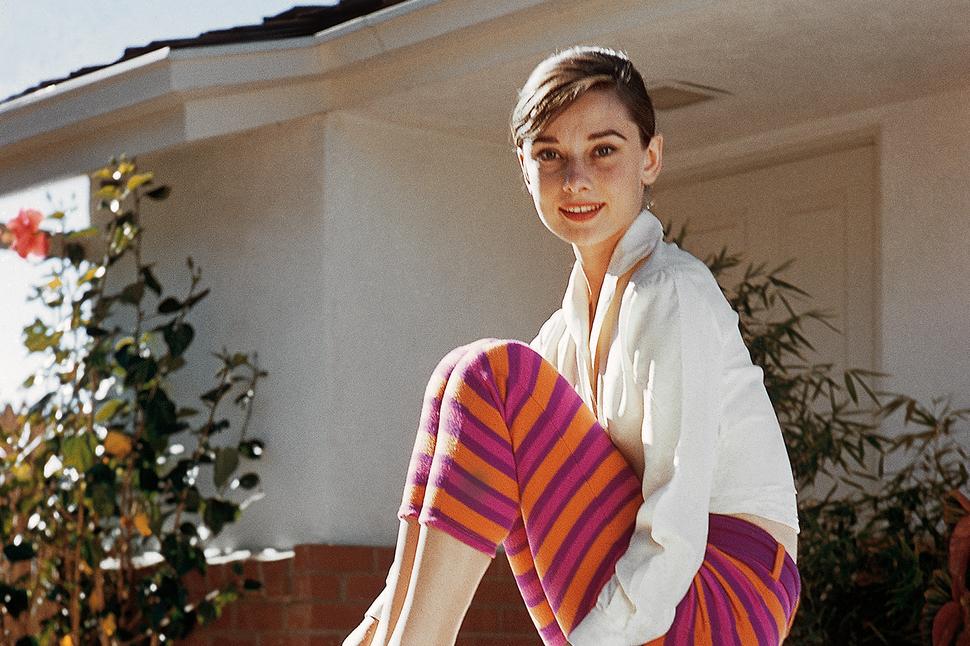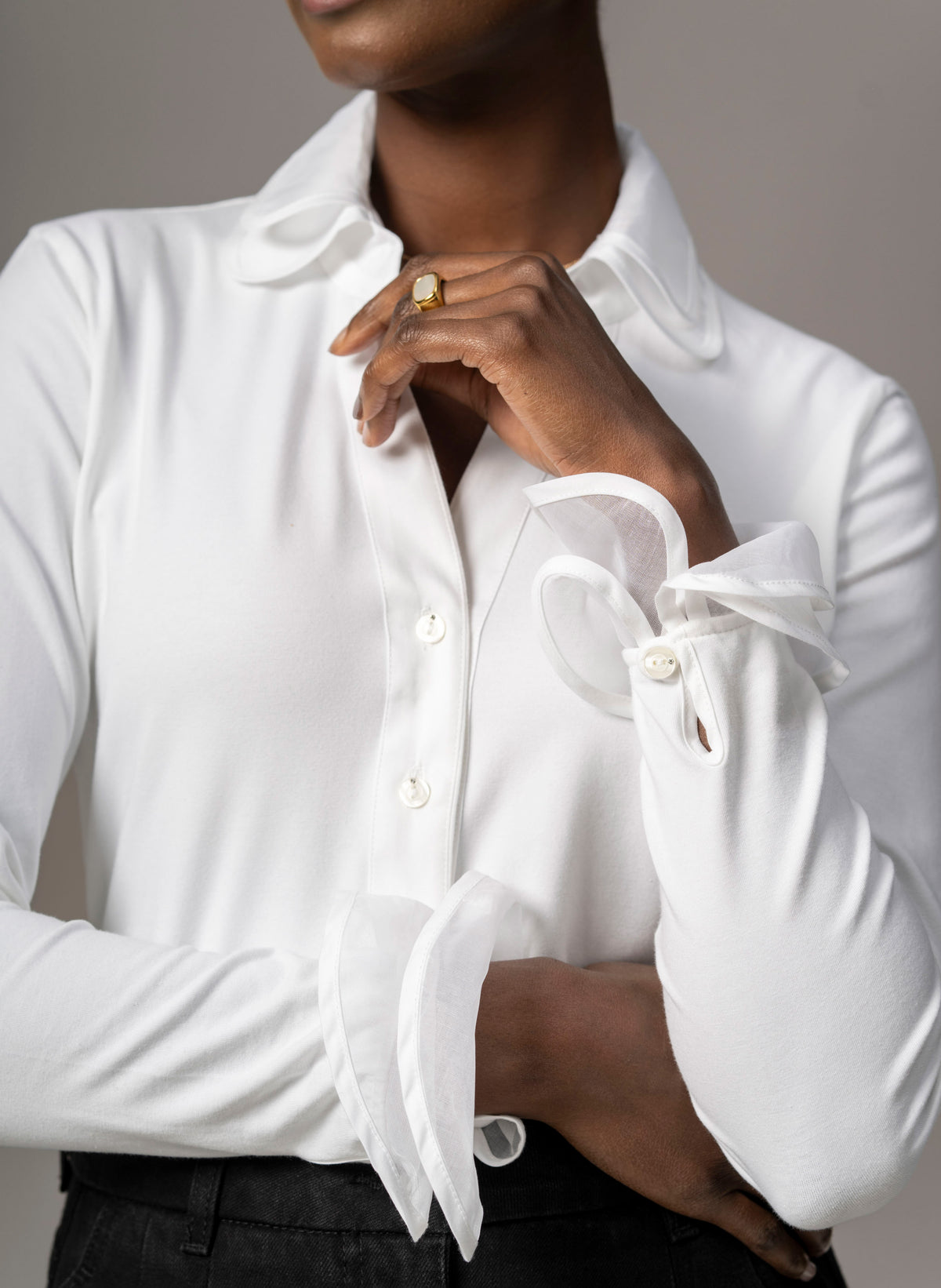The Complex Archetype of the White Shirt Will Surprise & Inspire You

A Jungian archetype is a pattern which echoes across the expanses of time and culture to connect humanity from all corners of the globe.
Take, for example, the Jester who, naturally for a trickster, also goes by other names such as the clown, the joker or the fool. No matter where you’re from in the world and whether you’re imagining a harlequin clad figure with bells on his hat or the Genie from Aladdin, we will all collectively understand the spirit and essence of this figure. We will know an enormous amount of how they act and what makes them tick from a single word.

Image credit: Wikipedia
An archetype communicates a multifaceted collage of message and meaning through its connection to others of its type spanning eras and continents in a way that is simultaneously simple and impossibly rich.
Think of the characters in fairy stories which communicate so much with so little.
In clothing terms, the white shirt is an archetype which has gathered centuries of meaning like layers of fresh alabaster white snow and there’s no better place to explore this than through the lens of fine art and visual culture.

Image credit: BBC
While not yet instantly recognisable, the white shirt has had lots of incarnations through the ages such as the Roman tunica manicata and the ancient Egyptian kalasaris. Although it might look totally different, the keynote echo here is that the white shirt's origins are as a unisex garment, worn by both women and men as an undergarment.

Image credit: Wikipedia
As it shifted through antiquity, the white shirt remained an undergarment through a myriad of lifetimes when it totally shook things up as the deceptively dainty chemise. The painting above of Marie Antoinette en Chemise by Louise Élisabeth Vigée Le Brun in 1783 (yes, a female painter!) proves that making underwear outerwear is not an exclusively Gen Z trend, despite what the Love Island contestants might try and tell you
Deeply controversial of the time for depicting the queen in a state of casual undress, the painting helped to singlehandedly popularise cotton as a material throughout Europe. Although the casual, romantic style was embraced by other society ladies (historic style icon Georgiana Cavendish — otherwise known as Keira Knightly in The Duchess — brought the trend to these isle when she was sent a dress by her mate the queen of France), the queen wearing such a cheap fabric was seen by Antoinette's fellow aristocrats as a despicable breakdown of the rigidly enforced barriers between the classes.
As we all know in our fashion steeped bones, trying too hard is still deeply uncool, but unfortunately Marie Antoinette was a little ahead of her time as we all know how it ended for her. A echo of edgy, casual rebellion still lives on in the white shirt however.

Image credit: Twitter/SoAudreyHepburn
Archetypes are a kaleidoscope and another shard which makes up the complex essence of white shirt is demonstrated beautifully by Louis-Auguste Bisson's daguerrotype of Honoré de Balzac. Finally looking somewhat like the white shirt we know and love, Balzac's most famous portrait is the beginning of a new era of white shirt symbolism. Known for chugging 50 cups of coffee a day, writing all night and illicit affairs, Balzac is the perfect representation of the white shirt bridging the gap between rebellious creativity and the discipline and hard work which it requires.

Image credit: Wikimedia Commons
The white shirt still carries the rebellion of Marie Antoinette, but as it's snowballed through time, it's picked up a fine dusting of innovation, artistry and honest hard work. An unlikely combination of things maybe, but it's impossible to argue that the white shirt doesn't hold all of these connotations within. It is a uniform for artists to this day, the sort of thing a defiant, unconventional heroine would wear in a movie and a board room staple.
"The phrase ‘white collar’ only appears later, in the early 20th century, in order to differentiate clerical workers from factory workers wearing ‘blue-collar shirts’. These phrases show the extent to which the white shirt is contemporary with the intensive industrialisation and bureaucratisation of the western world in the late nineteenth and early twentieth century. The connotation of work never ceases to exist, but in different manifestations: The white shirt, in other words, denotes, often in unspoken ways, different kinds of work throughout the twentieth century."

Image credit: Brandeis Now
Work was a great equaliser between men and woman both during and after World War I as employment for women became more socially acceptable and commonplace. Of course, no other garment but the white shirt would do as a staple for women striding new ground.
The liberation of this new era for women was a monumental cultural milestone which was celebrated through clothing in popular culture — particularly the somewhat shiny new medium of silent movies.
By the 1920s, the women's shirt stood apart from the glitz and glitter of many movie costumes as a sign of women's emancipation and a new modern independent woman. While this incarnation of women might be somewhat fresh, the democratisation of fashion which the white shirt came to symbolically represent had been pioneered centuries before by Marie Antoinette and her chemise.

Image credit: Thames and Hudson
Even deeper in the layered sediment of symbolism is the androgynous allure of the shirt which origins lie way back in the Ancient Egyptian and Roman times thousands of years ago.
The archetype of the white shirt is both simple and deeply complex. Contradictory in many ways, the pleasing juxtaposition and play between risqué and conservative is perhaps the scintillating backbone which makes the white shirt stand the test of time and shine in a multitude of social settings to this day.
_____________________________________________________________________-
Stay tuned for the next article in this series where I will explore how the archetype of the white shirt has continued to be a powerful visual symbol in more contemporary art, music, photography and fashion











